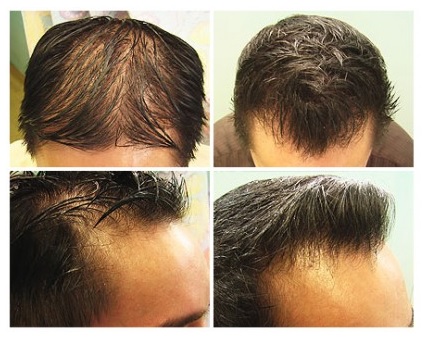- The hair follicle tends to be unique in people of a distinct ethnic background.
- The causes of hair loss may vary among different ethnic groups and, thus, call for a specific treatment or solution.
In ethnic hair transplant procedures, the two main racial groups that tend to require specified attention or care are people of Asian descent and people of African descent.
CAUSES AND TREATMENT FOR ASIAN HAIR LOSS

While people of Asian descent have a lower incidence of pattern baldness than Caucasians, this genetic condition remains the leading cause of hair loss among all racial groups. In fact, recent studies show that the prevalence of pattern baldness among Asian people is increasing for reasons unknown—it is hypothesized that a Westernized diet or socioeconomic environment could be taking effect. In essence, ethnic hair loss is still largely caused by pattern baldness.
Asian people typically have coarser (Thicker) hair follicles, while their scalps are populated with fewer hairs per square centimeter. This equates to an illusion of great density, with fewer actual follicles to work in the event of surgical hair restoration. While Asians have the ideal type of hair for follicular unit extraction—thick, extremely straight follicles make successful excision easier—the lowered hair count still calls for great care during FUE hair transplant. It requires that the donor region be vast and somewhat scattered, lest this area appear thinned out after extraction.

An additional factor to keep in mind with surgical restoration in other ethnic groups is the tendency to scar. People of Asian descent have a greater chance of developing keloids during wound healing, so the FUE hair transplant surgeon must take proper care.
Finally, hairline design is an important consideration. Since Asian people do have naturally thicker follicles, follicular unit extraction is the required technique to be able to build a soft, natural-looking hairline. Ideally, an Asian patient would have a hairline derived from nape or leg hair, which is only possible through a UGraft FUE hair transplant.
CAUSES AND TREATMENT FOR AFRICAN HAIR LOSS
Similar to Asians, people of African descent have less incidence of pattern baldness among them. But this condition is yet the leading cause of ethnic hair loss. In addition to pattern baldness, Africans, or African Americans, also contend with traction alopecia as a major cause of hair loss in women especially. Traction alopecia is a condition in which the hair thins gradually from frequent, forceful pulling. Often the result of constant tight braids, ponytails, weaves, barrettes, and extensions, many African American women and some men will discover gradual hair loss at the posterior and anterior hairline and around the ears. This is especially prevalent in African American women due to the cultural styling of their hair.

In some African patients, the problem is not always the tightness of curl, but another distinctive concern: the toughness of the tissue around the hair follicle, along with its uniquely durable attachment to the follicle. This again heightens the difficulty of excision, reinforcing the need for an advanced and widely practiced surgeon.
Lastly is the concern over keloiding. Again, as with Asians, people of African descent have a higher tendency to keloid in response to a skin lesion.
ETHNIC CONSIDERATIONS IN HAIR RESTORATION
Ultimately, though patients of Asian and African descent pose unique surgical difficulties and may have distinct causes of thinning hair, restoration is not impossible. With the right hair transplant surgeon and the proper care, ethnic hair loss is often correctable. Dr. Umar has successfully treated multiple cases concerning both Asian hair loss and African hair loss. With African hair restoration, traditional FUE methods are ineffective. Dr. U has invented a patented technology called UPunch Curl specifically for performing FUE hair transplants in patients with tightly curled Afro-textured hair. In a study, UPunch Curl was successful in all instances where traditional FUE failed.

Since hair lines receive the most attention on the face, a hair restoration procedure would need to emphasize a very natural-looking outcome across all ethnicities. To read more about what this entails, click here to read more.

